All Activity
- Yesterday
- Last week
-
All active with active electronics and 5 boosts the Clapton signature Stratocaster is easily the most powerful guitar in the world. It has 3 cascading 2N6429 transistors that boosts 3 times and discrete op amp topology that boosts 1 time. The last boost is with transistor 2N5087 the smallest boost the mid boost which is the 5 the boost. It has 1 500 volt output which it easily transistor voltage boosts up to 1 600 volts for safety with the help of the discrete op amp topology and the incredibly good condensators. The resistors are the best possible for highest possible boost. Without the mid boost it has 73 Db boost and is 160 times louder than a normal Stratocaster. Thats the way the decibel system works in these extreme levels. Only 7 decibels more 80 Db boost ( 80 decibels more than a normal Stratocaster ) makes it 256 times louder than a normal Stratocaster. The only passive thing in the Clapton signature Stratocaster is its stacked Humbuckers ( vintage Noiceless). A normal Stratocaster has only 0,15 volt output and a normal Gibson les Paul only 0,20 volt output.
-
Peter9998 joined the community
-
- 38 replies
-
- 1
-

-
- pedals
- pedalboard
-
(and 1 more)
Tagged with:
-
callumlprice joined the community
-
Gibson SG Faded Cherry 2005 near mint with Stagg hard case
callumlprice replied to Flea59's topic in Guitars For Sale
I know this post was years ago but just by a miracle is this still available by any chance -
obeyebo joined the community
-
Yep! Therein lie the important chord tones, which will add flavour to your soloing.
-
so use the bar chords of a song almost like scale shapes?
-
Welcome. And HNGD (Happy New Guitar Day). "Played it 'til my fingers bled"
-
Have you ever thought of taking the Fusion to a guitar tech to set up? Maybe they can get the neck closer to the way you want it. I'm surprised that the AS53 doesn't stay in tune. I have an AS73 and it stays in tune pretty well - just the occasional slight tweak needed. I would imagine it has the same hardware as the AS53.
-
Look at barre chord shapes and use those notes as a guide to what to play, then experiment with different positions up and down the neck. Then, if you're brave, try it with inversions and THEN with modes. See how far you can push things without it sounding irrelevant.
-
A common mistake is for folk to stick to the minor pentatonic when improvising, whether the key or chord is major or minor. Try and make sure you’re complimenting the chord by emphasising the 3rd note. A lot of players tend to play through the scales from one end to the other. Stand out from the crowd by making some interesting, intervalic jumps (Carl Verheyen is the king of this, check him out). Don’t be in a hurry to show your chops too early, build to a crescendo and release (the solo from Stairway is a great example of this).
-
ibblebibble7 started following Improvisation starting point
-
Hi guys, I've recently decided to start learning how to properly improvise on the guitar. I'm a massive fan of the licks, techniques and melodic sounds from Thin Lizzy (mainly Gary and Scott) and Led Zeppelin. does anyone have and starting point suggestions, I'm not a complete beginner as I have got 95% of crazy train down and a few Thin Lizzy songs like Waiting for an alibi and Dancing in the moonlight etc, I know of a few pentatonic scale shapes and the bare basics of minor third harmonies (I think?). Any help would be greatly appreciated!
- Earlier
-
repoman started following Mid-range guitar recommendations
-
I've currently got three budget electric guitars. I've never cared about getting anything fancy as a player as I believe you should be able to shred any guitar. They're all playable these days. But I don't want three electrics. So I'm looking to consolidate down to one really decent guitar. Somewhere in the £500-700 range. Something I can depend on for a decade or two. My three guitars now are: 1 - Harley Benton Fusion Tele (which looks gorgeous and has a tremolo). I love it. It never goes out of tune ever but it's a bit clunky to play. I've never been able to get the neck perfect. 2- Ibanez AS53. Gorgeous but doesn't stay in tune very well. No trem. 3 - Ibanez RGsomething or other. Nice and shreddy but heavy and no trem. I'm looking for something that looks good (so no Strats), has a trem (pref. non locking nuts) and good for everything from shred to jazz. Any ideas? I'm drawn to the EVH guitars but they do have locking nuts on the trem ones.
-
OK I think I've reached the end of the road with this one. Or at least I've gone as far as I can... The Ernie Ball VP Jr arrived and works great although there isn't enough space on the already quite generous pedal board for it. Over the weekend, I also discovered someone selling Eventide Pitchfactor for about 230 quid online and so pulled the trigger because it does Eventide Harmoniser detune. So that has replaced the TC Electronic 3rd Dimension. And a second Pigtronix Echolution arrived as well but I may have actually over cooked it a little because just one can handle stereo AND both the RV500 reverb AND the pitchfactor have delay as well...hmmm. Slight buyers remorse perhaps. The only thing left in the set up is another pair of Loudster power amps which I'm in no hurry to buy right now given the Marshall power amp does the job adequately for practice purposes. I'll post a pic of the actual pedalboard once I've finished the re-wiring. Now I should probably go and learn some songs...
-
Like countless others outside the UK, I've been drawn to and subsequently obsessing over the clean tones that were achieved by in demand US session guitarists in the eighties and early nineties. While Michael Thompson was perhaps best known for his clean tone, Dann Huff appeared on countless Top 10 recordings that featured his lush stereo swells including tracks by Peter Cetera, Amy Grant and others. Part of that sound was down to his rack of effects often involving a Mesa Studio preamp into a Songbird trichorus, then stereo with one side going through an Eventide Harmoniser and Roland SDE3000 or Lexicon delay, the other side going through a Lexicon reverb and then another delay. However another part of his sound involved a highly modified 64 strat c/- Jim Tyler which featured Seymour Duncan STK2 pickups in middle and neck plus a JB (SH4) humbucker in the bridge AND...a Tyler mid boost circult which also sparkled up the presence a bit as well. So I'm going to recreate his 64 strat, including making the midboost circuit. I've nearly assembled all the parts, however I had to trash the cheap neck that was going to be used after I discovered that it had warped into an S shape and whoever made it cut the fret slots at ninety degrees to one side of the fingerboard...DOH. Luckily it was only 30 quid but still...a replacement, fully painted, is on the way. Also, the pickup seller sent a TB5 custom instead of the TB4 (trem spaced version of the SH4) but the replacement has arrived. And finally, the series parallel pickup switches that arrived were on-off-on when I ordered on-on. So waiting for the replacements to arrive from a different seller.
-
- 1
-

-
It’s odd, I’ve always hated the look of Telecasters. I went into the local shop looking for a Stratocaster, preferably white with a maple fretboard. They had three that matched and all were between £100 and £150, which was fine because I am no guitarist… £360 later, I came out with one of these: And I love it! Not enough to leave it alone, though. I’ve already changed the bridge saddles to Gotoh, brass, compensated barrels. Which I think look a bit nicer.
-
I bought the Classic Vibe 50s Tele many years ago. All that remains of the original beast are, the neck and hardware, neck plate, control plate and scratch plate, although that’s been modded to accept the new neck pickup. The old body has become a small table and the old hardware is cluttering up a cupboard. Can’t help on the tuner ratio thing I’m afraid.
-
Thank you! From what I had read 1:18 seemed to be what I thought I would need, but I don’t know what the ratio of the current tuners are, and my muggy head didn’t think of simply doing what you suggest… So now I have a place to start with the tuners. As for gilding the lily, I’m doing it because I like doing it. It won’t cost me much. I think the pickup set is less than £30. I can’t remember what the switch costs. I have everything else already. It’d be nice to have a humbucker as the bridge pickup, being able to split it should, I hope, mean I get to keep the Telecaster twang. I like the idea of the versatility. Being able to go from playing Reba McEntire to Metallica (or, more lately, Rocky Horror Picture Show tunes) without having to change guitar, would be handy!
-
I'm afraid that I can't help with the 'compulsion' aspect of things, not being medically qualified, but the tuner ratio is quite easy to sort out. To get finer tuning, one needs a higher ratio. Imagine, if you will, a 1:1 ratio; each full turn of the tuner 'bean' turns the string shaft one complete turn (as on a violin or cello, for example, with tapered, non-geared, tuners...). The slightest turn would change the pitch a lot. Now, at another extreme, imagine a ratio of 1:100; it would take forever to change strings, as the 'bean' would have to turn so many times before even taking up the slack of a new string (a string winder would help, but still...). The 'average' tuner has a ratio of 1:12 or 1:14; this can easily be checked by noting, carefully, exactly where the string currently goes through the hole in the shaft. De-tune, counting the turns of the 'bean', until the string is at the exact same position after one complete rotation of the shaft. The number of turns of the 'bean', for one complete shaft rotation, is the ratio. Tuner companies have different ratios available, but tend to be more costly as the ratio increases. 1:18 is common enough, some offer 1:20, or 1:22. Again, this can be helpful when fine-tuning, but becomes a bit of a beggar when changing strings without a string winder. If there is any change to be made, I might suggest 1:18 as being the reasonable upper limit. 1:14 is an improvement over 1:12, but if there are still issues with ratios, I might also suggest that the method for tuning is maybe suspect. One always tunes from low to high; if the correct pitch is overshot, tune back down and start again, raising the pitch, slowly. Once it's overshot, it's not a Good Idea to go back down to meet the correct note; go back enough to only ever be tuning up to pitch. I've nothing to add concerning the other mods you're envisaging, as it's so dependent on one's tastes and budget. I would only cite the expressions 'gilding the lily' and 'diminishing returns' and leave it there. Hope this helps; meanwhile... Have a splendid day. Douglas
-
KingBollock started following Modding a Telecaster
-
A few months ago I treated myself to a Squier Classic Vibe 60s Telecaster. I love it but I just can’t let things be, I have to fiddle/meddle… I think the only thing I don’t like about it is the tuner ratio. Every time I think I have what I need, sorted out in my head, I read something contradictory and start doubting myself (there’ll probably be a lot of that in this post…). The trouble is that the tuning is too fine, so it’s near impossible to get it spot on. Do I need a higher or lower ratio? How do I find out what the current ratio is? Ideally I’d like to replace the tuners with ones with a more appropriate ratio. That fit in without having to enlarge the current holes in the headstock. It’d be nice to have drop in, vintage style tuners. I’d really like locking ones, too, but I have a feeling that what I am after just doesn’t exist, at least not without breaking the bank. The better ratio would be more important than locking. I don’t know what the current tuner ratio is. The other thing I want to do is change the pickups. I have seen a set that has a mini, hot rails humbucker for the bridge and a black chrome single in the neck position. I want to replace all the electrics*. I want a 4 way blade switch for: Switch Positions 1) bridge 2) neck + bridge (parallel) 3) neck + bridge (series) 4) Neck Plus a push pull pot for splitting the hot rail coils. So I need to find a diagram for all that. I’ll also be replacing the control plate for one with a slanted switch. I bought a replacement switch knob to help with access, but it’s not much of an improvement and it’s ugly. Can’t decide whether to stay chrome or go black. I’ll have to get on my PC, find some pictures and do a mock-up to give me a better idea. *There are two reasons for replacing all the electrics. One is that I can’t help myself! Doing this stuff is the best part of owning a guitar (it sure ain’t the playing, not the way I do it…). The second reason is that if it turns out that I preferred this guitar as it is, the plan would be to get a cheap Telecaster kit (I’ve seen a nice, semi-hollow bodied one at Thomman) that I can drop the new electrics into. I have been wanting to build a kit for a long time. So, any advice or/and help with this, would be greatly appreciated. It would also be fun to see/read about other peoples’ Telecaster mods.
-
manfredliam joined the community
-
Or, pretty much, exactly the same.
-
I should think so. It appears from what the original designer has said that the fairly accurate reproduction of the look of the original in the first version, plus the lack of the Behringer logo what what pushed them to sue over that one rather than the million and one Klones on the market. I mean, I can see their point, but it really does seem petty when they've not put the original out since 2008. It seems an awful lot of expense to go to over a product they haven't offered in the guts of two decades.... I have a feeling we've not seen the last of this. Behringer seem to be pretty confident, though, given they're playing the game this way. The Klon original team's claims about quality interest me... in truth, having tried effects pedals at all sorts of levels, I've never found a genuinely significant quality difference between pedals once you spend enough to guarantee physical durability. Sure, a difference in *sound* in some cases, but whether that's *better* is subjective. I often find I prefer a much cheaper pedal due to the simplicity off the design: most of the time I'm buying a pedal for a specific sound, and I don't need a million variations built in...
-
I bet that very subtle change in the graphics really pisses Klon off, which makes me smile.
-
It's fascinating how commonly cloned the Klon is, down to its legendary status. Any number of them out there, really. I got an email in yesterday telling me my pedal from Thomann is now on the way - we'll see if it's the original version or something new. I kinda wish I had ordered a few now! According to online reports, this is the new version (which may be what I'll receive): https://guitarbomb.com/behringer-rebrands-klon-clone-centara-overdrive/ Same housing, slight change of name and logo. It strikes me with some amusement that if this doesn't settle the lawsuit, this could become an even rarer version (maybe we should bot order more of them.... if I had an original couple of Klons now, I'd be selling them to buy a Gretsch!). Legalities aside, it still feels to me that Klon are taking the piss suing over an albeit very close lookalike of a pedal they've declined to put on the market for seventeen odd years....


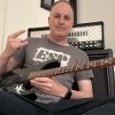
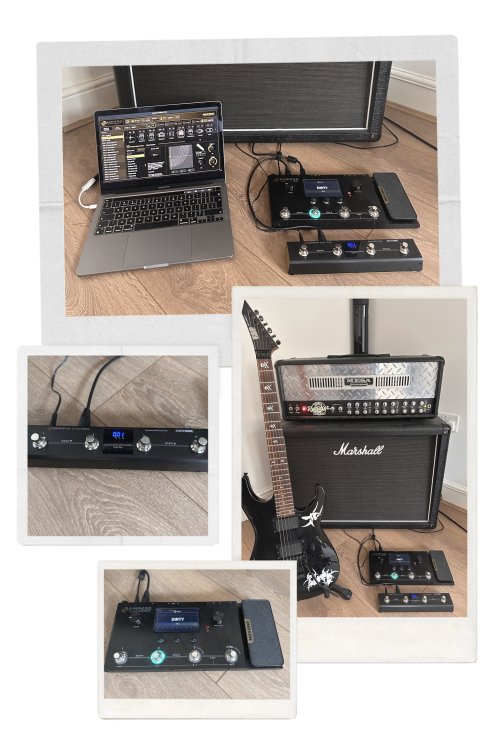
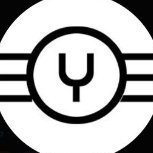
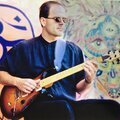
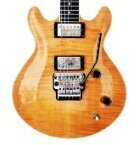

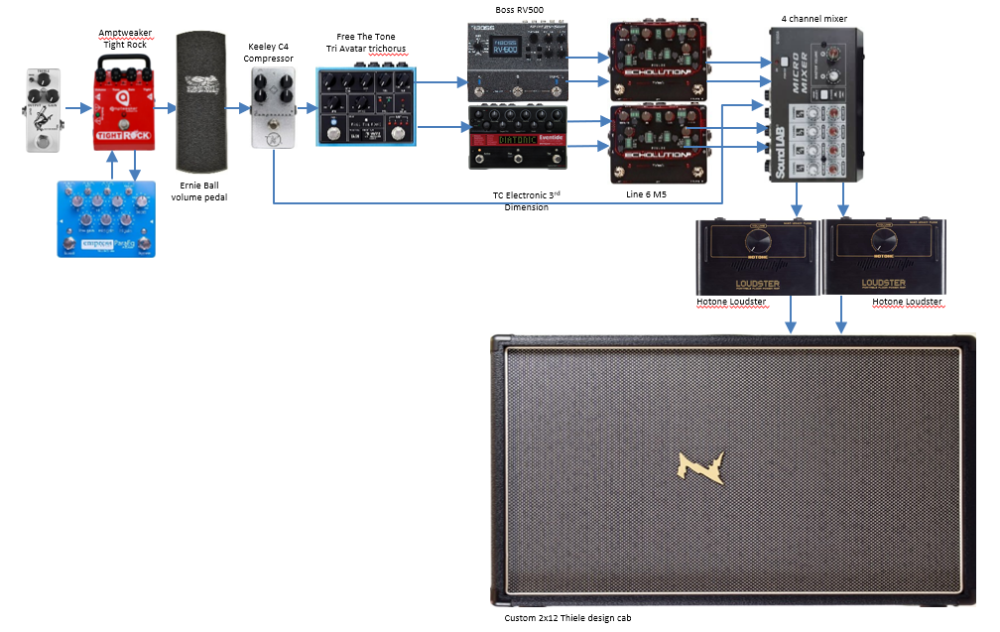
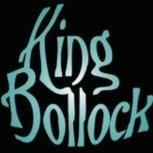

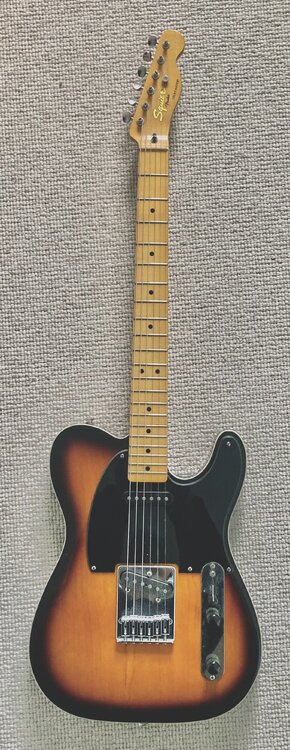

.thumb.jpg.2f0f241a63381e5644f287abacd76760.jpg)